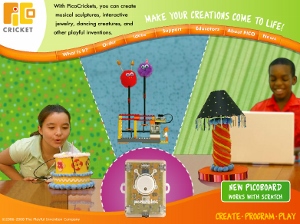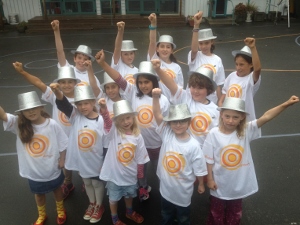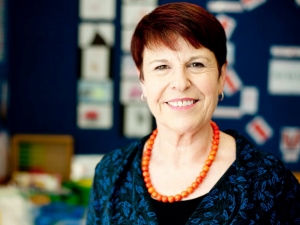‘Cricket’ technology helps schoolgirls learn computer coding

 While New Zealand was obsessing over the Cricket World Cup over the past few weeks, a group of primary school girls in Northland have been learning some valuable skills for future careers with the help of another kind of cricket – namely, a clever piece of technology called a Pico-Cricket.
While New Zealand was obsessing over the Cricket World Cup over the past few weeks, a group of primary school girls in Northland have been learning some valuable skills for future careers with the help of another kind of cricket – namely, a clever piece of technology called a Pico-Cricket.
The ‘Pico-Cricket’ is a sensor board invented by MIT Media Labs that allows girls and boys aged from as young as eight to integrate art and creative thinking with technology using sensors and coding languages like “Scratch”.
The girls have been learning how to use the technology through an after-school programme called Tuna Tec, which is run through the High Tech Youth Network studio located in Northland. Last Friday they gathered at the studio again to participate in a nationwide event that focused on getting kids – and especially girls – into computer coding.
Mike Usmar, CEO of High Tech Youth Network, says Pico-Cricket is just one of the many pieces of technology that youth throughout the country had the chance to try for creating code as part of Microsoft’s Asia-Pacific wide ‘Week of Code’ campaign, which encouraged young people to try coding, many for their first time.
“A key part of our mission is getting young people into training for future employment in the technology sector, which has become New Zealand’s third-highest export earner, worth over $8.4 billion,” Mr Usmar said.
“Imagine what it would do for employment in Northland, and other hard to reach communities across the country, if our young people were able to receive such training as part of their regular school education.”
The High Tech Youth Network has drawn support for the campaign from a range of high-profile public figures, including sport legends Michael Jones and Manu Vatuvei, who have backed the campaign and joined with youth across the country to encourage everyone to try coding for themselves.
“Code should really be New Zealand’s fourth language, as technology touches every part of our life,” Mr Jones said.
Mr Usmar said the campaign was particularly targeted at girls, noting the fact that women are under-represented in the technology sector globally, where companies like Google have just 17 per cent women employees.
For the campaign, Microsoft made a range of resources and activities available through the website www.wespeakcode.net, which students, teachers and parents can try for themselves to help them take the first step in the world of coding.
For more information, visit www.hightechyouth.org









